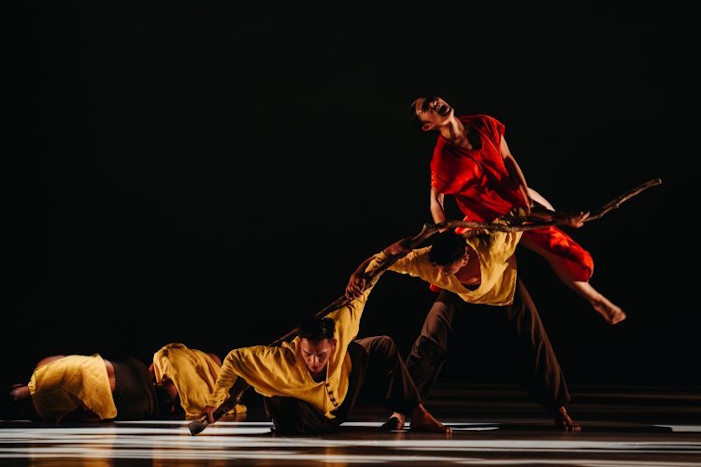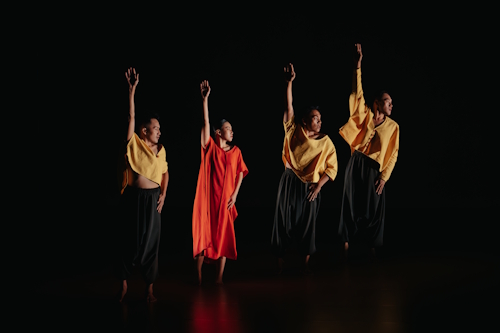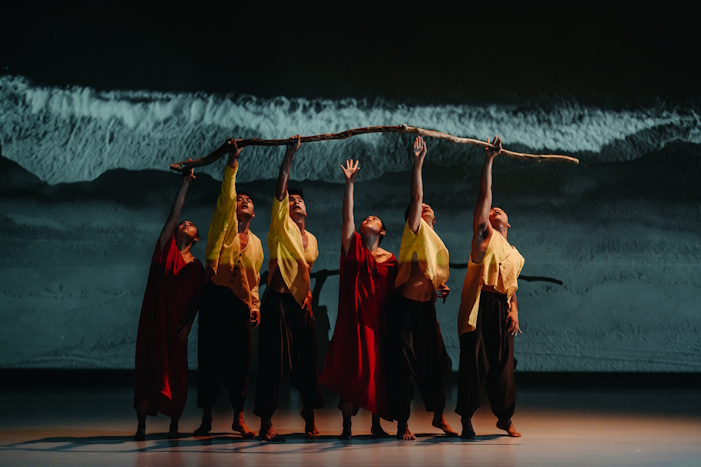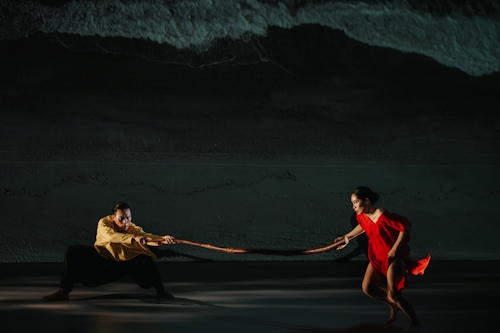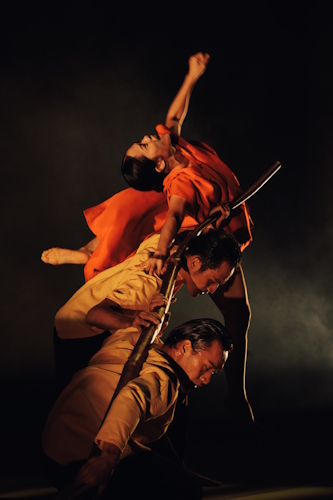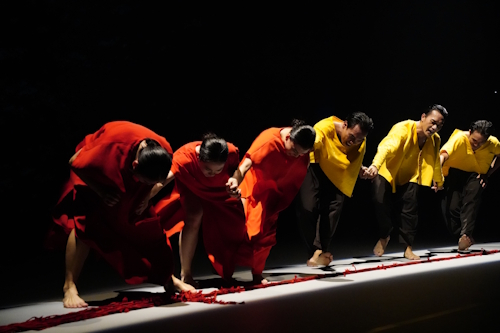The Place, London
October 21, 2025
For the second time in a few days, The Place hosted a performance of a work inextricably rooted in a dance company’s homeland. Again terrifically constructed and danced, bulabulay mun? by Tjimur Dance Theatre (蒂摩爾古薪舞集) from Pingdung in Southern Taiwan inhabits a very different world to National Dance Company Wales’ Mabon, however, being inspired not by mythical beasts and stories but by all-too-real-life war.
Choreographed by Baru Madiljin (巴魯•瑪迪霖), bulabulay mun? remembers the Mudan Incident of 1874, when a Japanese force attacked indigenous Paiwan villages in southern Taiwan following the killing by villagers of shipwrecked Japanese Ryukyu sailors three years earlier. That earlier incident happened after the villagers incorrectly perceived a mortal threat to themselves and their homeland.
While Madiljin addresses the Mudan Incident, he wisely avoids trying to narrate it directly. The passage of time and the very one-sided nature of contemporary records have rendered the depiction of what happened, and of right or wrong, incredibly difficult. Rather, and with a very open-minded approach that is semi-abstract and that also connects with the modern-day, he weaves ancestral memory and still lingering historical scars into the dancers’ bodies and emotions.
Meaning “How are you?” in the South Paiwan language, bulabulay mun? also serves as Madiljin’s gentle greeting to all those connected with what happened.
Tjimur Dance Theatre are noted for the way they interpret and express the identity of the Paiwan tribe, one of Taiwan’s sixteen indigenous peoples but through a modern lens. That is very much to the fore in the work, which features ancient songs fused with choreography that while very contemporary in outlook draws on traditional dance steps.
The opening is immediately arresting. A woman in a red dress is seen laying absolutely still, tangled strands of red thread flowing from her body into the wings, the scene repeated on a huge screen at the back. It’s impossible not to see her as symbolic of historical figures and their stories, those red strands, surely representing the bloodshed of war, reaching back through time.
Integral to bulabulay mun? is the singing of an ancient Mudan song that surfaces from time to time, and that guides the dancers’ movement. The song is an expression of pride in a tribal culture that came so close to being extinguished not so long ago, its words speaking of preserving tradition and carrying it forward. The way they sing and dance simultaneously, and so powerfully, is quite remarkable.
The work makes no distinction between Mudan people and Ryukyuans although the choreography does initially appear to hint at events in the first scenes. As the cast move to the sound of waves, their bodies are tossed as if at sea. Other moments suggest a sea breeze. When they dance with a piece of driftwood, it’s impossible not to initially see the prop as a ship.
As they performers journey, the women (Meng Tzu-en, 蒙慈恩; and Zepulj Kazangilan, 日柏樂•旮扎伊嵐) frequently swing dramatically on the piece of wood, and are lifted high by the men (Yang Ching-hao, 楊淨皓; Ljaucu Tapurakac, 舞祖•達卜拉旮茲; Chiang Sheng-hsiang, 江聖祥), gazing into the distance as if seeking the way forward.
A better interpretation is likely that it’s simply the vessel that carries us all through time, through history. The tossing around and hints at conflict, the buffeting, rather all a reflection of life’s restlessness and its many ups and downs. Uncertainty is there for all to see.
Although bulabulay mun? is very much an ensemble work, the dancers are very much seen as individuals. Madiljin also gives all a stage moment to themselves in brief solos, each incredibly strong and commanding, and full of feeling.
Everything is backed by wonderfully evocative projections of visual image designer Wang Hung-chun (王鴻駿), either of the sea or of the beach. The sands of the latter may be deserted, may be beautiful, but it’s impossible to escape thoughts of the past, of what happened there.
For the finale, the mood changes. On a strip of red fabric that runs the width of the stage, the cast dance and sing a joyful song from Mudan. As they shift across the fabric, traditional steps to the fore, the river of red is folded behind them. While the past will never be forgotten, should never be forgotten, it’s as if it is finally being put to rest, people having come to terms with what happened and made their peace. The feeling is one of moving on, and one of hope for the future.
Tjimur Dance Theatre and ‘bulabulay mun?’ continues on tour to Dance East, Ipswich (October 24, 2025); Dance City, Newcastle (October 28); and Pavilion Dance South West, Bournemouth (October 31).

